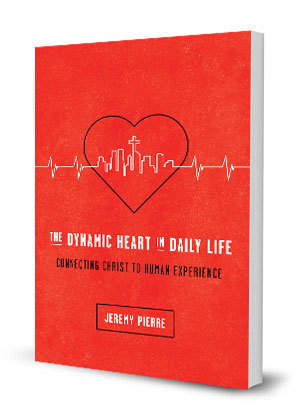
by Lucy | Mar 12, 2019 | biblical counseling, Counselor Resources, Tuesday tool
Use sandwich communication with kids to lovingly and effective engage conversation. This tool is helps make communication with loved ones … a joy.
Based on a biblical model, the sandwich communication tool helps you effectively communicate — even correct your child — by beginning and ending with the positive.
I recently watched a dad correct his daughter three or four times in a 10-minute conversation that left her with a downcast spirit.
Her expression said, “Can’t I do anything right?” She appeared to melt into the wall and disappear.
Results—yes. Good results—no!
This article by Sherry Allchin, MA, appeared first here on Biblical Counseling Center, which gave permission to reprint. Sherry is among the dozens of female biblical counselors listed on Heart2Heart Counselor Directory. See her contact info. She counsels in by Skype and in person in South Carolina. Edited for length.
Begin with the Positive
When communicating anything to your child, but especially a correction, begin with a positive. When Christ corrected the churches in Revelation 2 – 4, He began by telling each of them what they were doing right.
Each time we approach our children (even spouses!) we need to affirm their positives, what they do w\ell.
Let no corrupting talk come out of your mouths, but only such as is good for building up, as fits the occasion, that it may give grace to those who hear. Ephesians 4:29, ESV
EXAMPLE: Let’s say a child is getting his tempera paints all over the place. Many parents might say, “You’re so messy; why can’t you do it like Joni?” This message communicates, “You are not as good as Joni. Messy is your nature so I guess you’ll never change.”
But a gospel-motivated parent might begin with a positive part of sandwich communication, such as “I like the colors you are choosing for your picture. Here, let me give you a paper towel to clean up some of those drips. I can’t wait to see your finished picture!”
The positive approach gets the child’s attention that he is doing something of value to you as well as to him, that he really does have some good qualities even though they may still need some polishing.
Time for the Negative (or Correction)
Now the middle part of sandwich communication.
I always hated it when a teacher told me I had it wrong but left me no clue about how to fix the problem. Some children are left feeling that same way by parents.
Yes, they know it was wrong, but they still don’t know what to do to correct it. How do you correct being a lazy slob if you’re told that’s who you are? How do you correct a math problem you don’t understand?
A child made in the image of God has wonderful potential to change any wrong thing she is doing, and she needs to be reminded of that continuously in the process of corrective sanctification.
So a child is not a lazy slob; she is failing to make her bed before breakfast or take out the garbage when asked. That is a problem that can and should be corrected. “This is what I want you to correct and how I want you to do it.”
Finish the Deal with a Positive
The last part of sandwich communication ends in a positive.
You might say something like,
You are a strong boy and very capable of carrying your load around our home.
And because we love you and want to train you for life, we must insist that you do ______ by dinnertime or face the consequences of ______.
We are confident you will choose to make a wise choice that honors God and your parents because we have watched you growing in your love and obedience in so many ways.
Yes, sandwich communication quickly reaches the heart of most children (or adults, for that matter). But if a child’s spirit has already been deeply wounded, it may take some consistency on your part for the child to respond well. He must come to believe he has intrinsic value because he is made in the image of God and because he can change to become more and more like Jesus in everyday life.
Practical Help
- Ask the children in your life if they think you are made at them “rarely,” “sometimes,” or “often.” If the answer sometimes or often, please ask their forgiveness. Remember, man’s anger never produces God’s righteousness.
- Recognize that your anger is usually about what is inconveniencing you, not what your child truly needs to correct.
- Plan the “Sandwich” that you will give your child, first a positive related to what needs correcting or overall positive character you see in him. Then carefully word the Correction in a way that guides him to biblical change for God’s glory. Finish the Sandwich with the Bread of Life, God’s love for him, your love for him and your confidence in his ultimate maturity (Hebrews 12:5-10).
Next Step
Consider getting biblical counseling for you and your child if home is a war zone. Contact us and learn more about biblical counselinghby Skype.
Counseling Hearts to Hope,
Lucy
by Lucy | Apr 4, 2017 | biblical counseling, identity in Christ, Tuesday tool
 “A-to-Z Identity List” is this month’s Tuesday tool.
“A-to-Z Identity List” is this month’s Tuesday tool.
When you tell yourself the truth of who you are in Christ, your life undergoes a beautiful transformation.
Click & Tweet!
“I am Chosen by God”…”I am Made to worship”…”I am Victorious over sin” — these A-to-Z truths and others come from the Word of God. And they will encourage you to stop false beliefs and start seeing through the lens of scripture. Then as you embrace them, your mind is renewed (Romans 12:2), and healing follows.
Get the Most from the A-to-Z List
Here are two excellent ways to delve into your God-given identity and get the most out of the A-to-Z list.
- Read the entire list of words, and note 3 to 5 that are meaningful to you.
- In a journal, personalize each verse. EXAMPLE: For Lamentations 3:22-23, you might personalize it by jotting down,
God loves me and has great compassion for me.
I don’t have to let trials rock me because God is always faithful to me.
Journaling God’s truth is among the best helps for my counselees to reduce their anxiety, calm their anger, and turn their feelings of despair into real hope.
A-to-Z List
Accepted–John 15:15; Ephesians 1:6
Born Again–John 3:5-7
Chosen, confident–Ephesians 1:4; 2 Corinthians 3:3-4
Direct Access to God–Ephesians 2:18, 3:12; Hebrews 4:16; 1 Peter 2:5
Established by God--Genesis 1:27; 2 Corinthians 1:21-22
Forgiven—Ephesians 1:7; Psalm 32:1; Isaiah 43:25-26!
God’s child—John 1:12; 1 John 3:1
Heir with Christ–Romans 8:17, Galatians 3:29
Immersed in Jesus Christ–Acts 2:38; Romans 6:4
Justified—1 Corinthians 6:11; Titus 3:5-8
Kept for eternity--John 10:28, 29; Philippians 1:6
Loved–John 3:16, 15:13; Ephesians 5:2, Colossians 3:12
Made to worship–Ecclesiastes 3:10-11; John 4:24
New creation in Christ–2 Corinthians 5:17
Optimistic--Joshua 1:9; Romans 8:28-29
Peace—John 14:27; Philippians 4:7, 2 Thessalonians 3:16
Quietness of Soul–Psalm 46:10, 62:5, 131:2
Rescued from Satan’s domain–Colossians 1:13
Secure, sealed – 1 Peter 1:5; Ephesians 1:13-14, 2:8-9
Temple of God–1 Corinthians 3:16, 6:1
Unique--Matthew 10:30; Psalm 139:14
Victorious over sin–1 Corinthians 15:57; 1 John 5:4
Whole, no longer incomplete–James 1:2-4, 1 John 4:12
Xtra valued by God–Psalm 17:8, Deuteronomy 32:10
Yoked with Jesus–Matthew 11:28-29
Zealous for the things of God–Revelation 3:19; Titus 2:14
by Lucy | Mar 28, 2017 | biblical counseling, book reviews, Tuesday tool
 The Dynamic Heart in Daily Life: Connecting Christ to Human Experience is a treasured tool I very highly recommend and use regularly in counseling. if you’re a counselor, you’ll appreciate this tool to help women and families. If you’re not a counselor, but want to understand why you feel, and say, and do, the way you do, then this book is for you too.
The Dynamic Heart in Daily Life: Connecting Christ to Human Experience is a treasured tool I very highly recommend and use regularly in counseling. if you’re a counselor, you’ll appreciate this tool to help women and families. If you’re not a counselor, but want to understand why you feel, and say, and do, the way you do, then this book is for you too.
READ A CHAPTER –> Wouldn’t you like to read a chapter? Here’s a link to chapter one.

In this brief article, you’ll learn from Jeremy Pierre’s book:
- What makes your heart tick
- How the heart is corrupted and redeemed
- A plan to counsel the heart
What Makes Your Dynamic Heart Tick?
Your heart responds cognitively, affectively, and volitionally to the life’s circumstances. It is multidimentional, it is dynamic. Most important, faith in Christ is the means by which your heart can respond to life differently, better.
Did you know each person’s heart is both simple and complex? The heart has automatic responses to situations. But underlying these seemingly auto-responses are deep beliefs, desires, and commitments of which people are generally unaware.
However, people can become aware and should. While psychotherapy on the whole divides awareness into conscious and subconscious, Scripture has a multifaceted view.
The Dynamic Heart, Corrupted
The corruption of the heart began at the Fall (Genesis 3) and infects all of the dynamic heart: cognition, affection, and volition. It shows up as idolatry.
Idolatry is a whole-hearted inclination that fails to believe God is God and worship him alone.
An alcoholic, then, is not worshipping a bottle but something deeper and more complex—a way to get something good apart from God. As this becomes habitual, the person loses sight what the idol is doing to him and he takes on the deadness of the idol to his detriment. God interrupts, he gives a Cross-shaped message of hope.
The Dynamic Heart, Redeemed
Jesus redeems the dynamic heart so it can do what God intends: worship him in thought, desire, and choice. God made the heart to imitate his own. Did you know you are an image-bearer?
While God is unlike people in many ways (e.g., he is omniscient), he is like people in some ways. For instance, he reasons and has emotion. As believers respond whole-heartedly to God and without reservation in reflective prayer and careful study of Scripture, they become more like Jesus.
Counseling the Dynamic Heart
A plan for counseling the dynamic heart requires four tasks. They are:
READ: Hearing people’s hearts
Llistening is crucial to understanding a hurting person and her problem in its context. Hearing the heart includes paying attention to what the counselee is saying (and not saying).
REFLECT: Helping people understand their responses
Self-awareness helps a hurting her connect her intuitive (or, automatic) responses to their belief system. Then she can challenge her automatic heart responses and begin to change.
RELATE: Looking to Jesus
With greater self-awareness of one’s responses, she sees that the help she needs comes from Jesus. Just as a believer trusts Jesus for her salvation from sin, she also learns to trust him for helping her make new heart responses.
RENEW: Calling for new responses from faith
Commitment to change is key. This requires an active faith since “heart change occurs as it is lived out, shaping and reinforcing new values and commitments,” Pierre writes.
Resources for You!
COUNSELING: Struggling? I offer biblical counseling by Skype and in person (greater Chicago). Learn more.
Struggling? I offer biblical counseling by Skype and in person (greater Chicago). Learn more.
FIT FOR LIFE eBook: A comprehensive weight-loss and life change plan. Check it out. Click here for information.
ARE YOU A COUNSELOR? Join Heart2Heart Counselor Directory! Get details now..
Sharing Hope with Your Heart,





 The Dynamic Heart in Daily Life: Connecting Christ to Human Experience
The Dynamic Heart in Daily Life: Connecting Christ to Human Experience 

 Struggling? I offer biblical counseling by Skype and in person (greater Chicago).
Struggling? I offer biblical counseling by Skype and in person (greater Chicago). 

